The most obvious challenge in Zone 3 is the extreme cold and frost. Many plants are not adapted to survive such low temperatures, but for gardeners who live in this area, you shall not lose hope.
We’ve gathered some resilient plants and shrubs for wet areas in Zone 3 that are specially tailored for this unique climate. Despite being hardy, these plants are also known for their tolerance to wet or boggy conditions. So without further ado, let’s check them all!
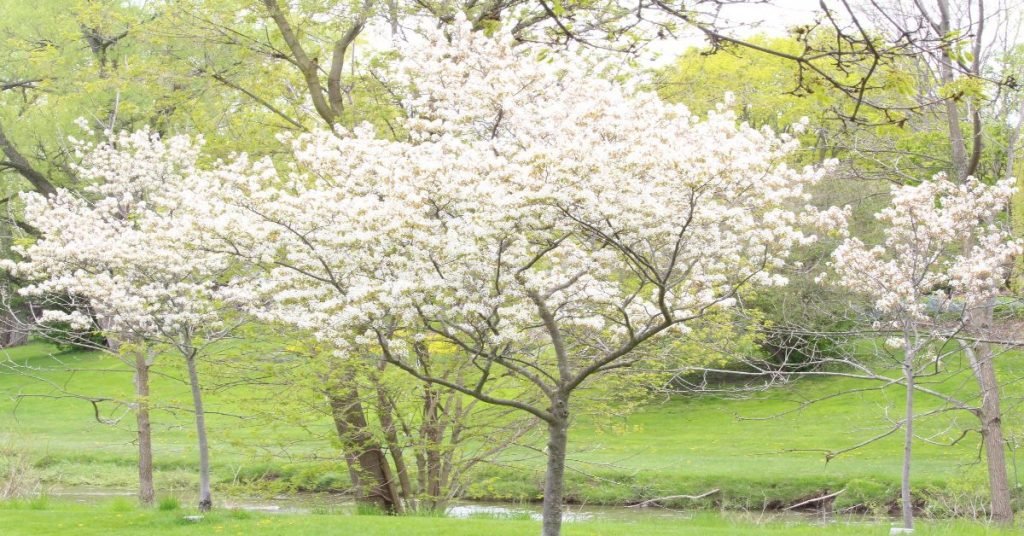
Table of Contents
Characteristics of Gardening in Zone 3
The USDA (United States Department of Agriculture) divides the United States into gardening zones based on average annual minimum temperatures. Zone 3 is characterized by cold winters and low temperatures. Some states and cities located in Zone 3 include:
- Alaska (parts of the state)
- Montana
- Wyoming
- North Dakota
- South Dakota
- Minnesota
- Wisconsin
- Michigan (Upper Peninsula)
- Maine (northern regions)
- Vermont (northern regions)
- New Hampshire (northern regions)
Zone 3 can vary in terms of its precipitation patterns and overall moisture levels. However, in general, Zone 3 tends to experience moderate to low levels of precipitation. This can result in drier conditions compared to other zones in the United States.
During the growing season, which typically spans from spring to fall, Zone 3 areas receive a moderate amount of rainfall. However, it’s important to note that the timing and distribution of precipitation can vary within the zone. Some areas may have relatively even rainfall throughout the season, while others may experience more pronounced dry periods.
Additionally, Zone 3 often has cold winters with significant snowfall. The snowfall can provide moisture to the soil when it melts in the spring, contributing to the overall moisture content.
However, frozen ground during winter can restrict the absorption of moisture, resulting in reduced moisture availability for plants.
It’s important to consider local conditions and microclimates within Zone 3, as some areas may have specific water management challenges. Factors such as elevation, proximity to bodies of water, and local topography can influence the overall moisture levels within a specific location.
Sun-loving Shrubs for Wet Areas Zone 3
White Dogwood (Cornus alba)
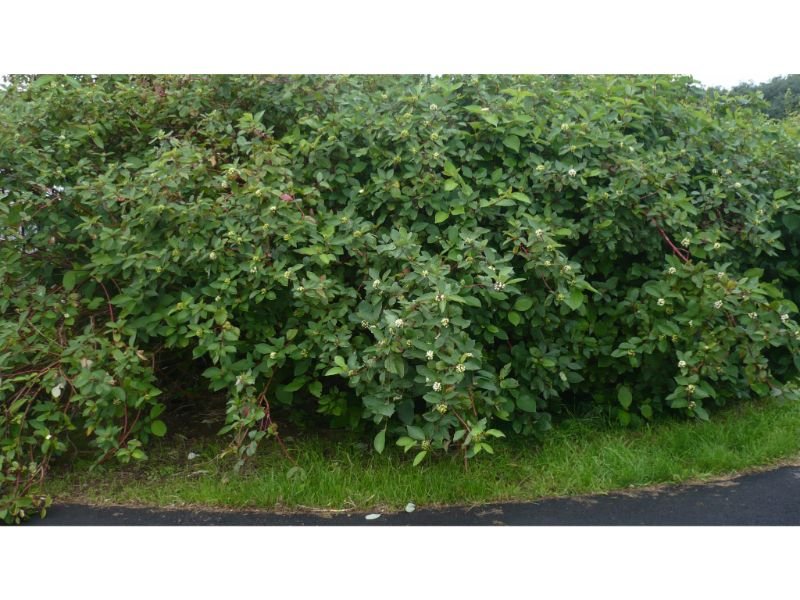
Plant Size: 2 to 3 meters high and wide
The white dogwood is a deciduous shrub that is best known for its cream-colored blooms and ornamental value. A cold hardy, this spring bloomer benefits from periodic pruning to maintain its shape and encourage new growth. You can prune white dogwood in late winter or early spring before new growth emerges.
Plant Trivia
White dogwood shrubs have a spreading root system that can be effective to prevent soil erosion.
Sweet Pepperbush (Clethra alnifolia)
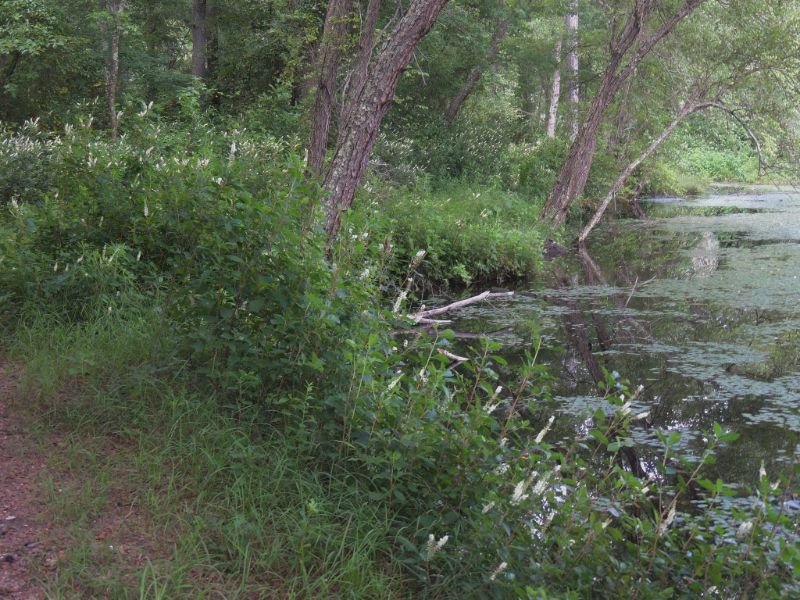
Plant Size: 1.5 to 3 meters high and 1.5 to 2.5 meters wide
If you’re planning to create a pollinator garden in the wetlands area of Zone 3, sweet pepperbush shrubs are here to grant your wish. Sweet pepperbush shrubs feature pale pink or white clusters of tiny blooms, known as racemes, with a slightly spicy and sweet aroma. These shrubs for wet areas in zone 3 prefer acidic soil that is humus rich.
Plant Trivia
Sweet pepperbush is generally hassle-free once matured and established. This plant is also relatively pests and diseases free, reducing the need for extensive care.
Witherod Viburnum (Viburnum cassinoides)

Plant Size: 1.5 to 3 meters high and 1.5 to 2 meters wide
Other shrubs for wet areas in Zone 3 that are perfect for pollinator gardens and are easy to maintain are witherod viburnum. These moist-loving flowering plants stun with clusters of creamy white blooms and ovate or elliptical foliage that turns in shades of red or burgundy during fall.
Plant Trivia
Witherod viburnum shrubs produce unique, color-changing, berry-like fruits. It starts green then transitions to shades of pink or red, before finally maturing to a glossy black color.
Shrubs for Wet Areas Zone 3 That Like Shades
Canadian Serviceberry (Amelanchier canadensis)
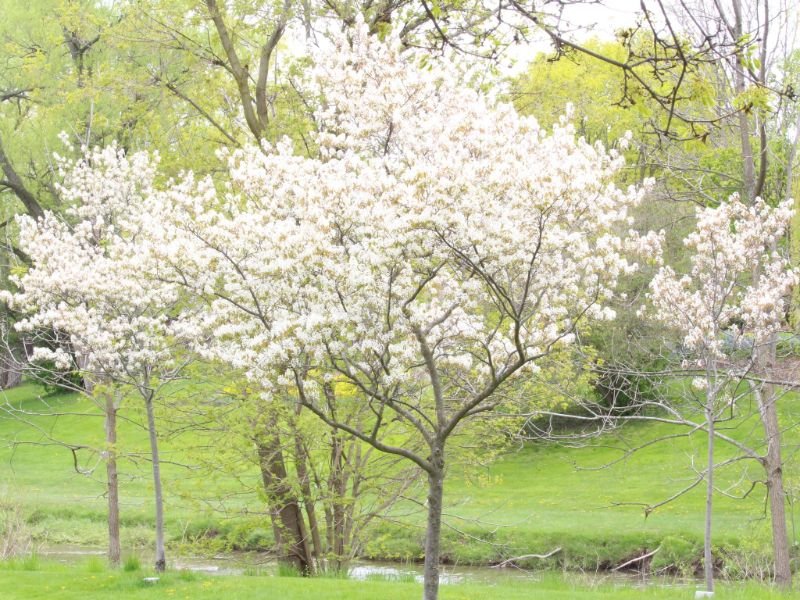
Plant Size: 3 to 6 meters high and 2 to 4 meters wide
For those who crave large shrubs, Canadian serviceberry shrubs are then your ultimate answer. These plants are native to North America and prefer to be in cool or moderate climates. The plants’ tolerance to cooler temperatures and damp soil makes it one of the highly recommended shrubs for wet areas in zone 3. They can be propagated through seeds.
Plant Trivia
Canadian serviceberry produces small and round berries that rip during summer. These dark purple or black fruits have a sweet and slightly bitter flavor. They can be used in various culinary preparations.
Bog Rosemary (Andromeda polifolia)

Plant Size: 0.2 to 0.4 meters high and 0.3 to 0.6 meters wide
Although bog rosemary is small in size, this plant still has a big heart. As the common name indicates, this plant is well-adapted to wetland environments. It can thrive in acidic, peat-based soils with poor drainage–a place where many other plants would struggle to survive!
Plant Trivia
Bog rosemary mostly relies on insect pollinators like bees and butterflies for cross-pollination, thanks to the bell-shaped blooms of this shrub that produce nectar.
Black Chokeberry (Aronia melanocarpa)
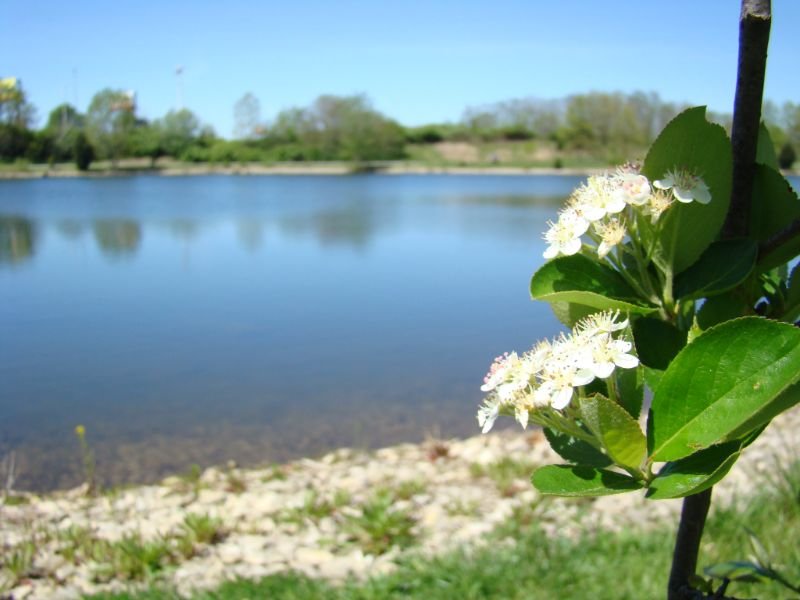
Plant Size: 1.2 to 3 meters high and 1 to 2 meters wide
Black chokeberry is a small to medium-sized shrub that is known for its fruits and flowers. During spring, this plant stuns with clusters of white or pale pink blooms, accompanied by oval-shaped foliage that is dark green. This plant is generally not prone to serious disease problems, however, they’re still susceptible to leaf spots and powdery mildew.
Plant Trivia
Black chokeberry produces edible berry-like fruits, however, do not expect the taste to be as sweet as Canadian serviceberry. The fruits are extremely tart and astringent, thus earning this plant’s common name, ”Chokeberry”.
Flowering Plants for Wet Areas Zone 3 with White Blooms
White Dwarf Crested Iris (Iris cristata ‘Alba’)
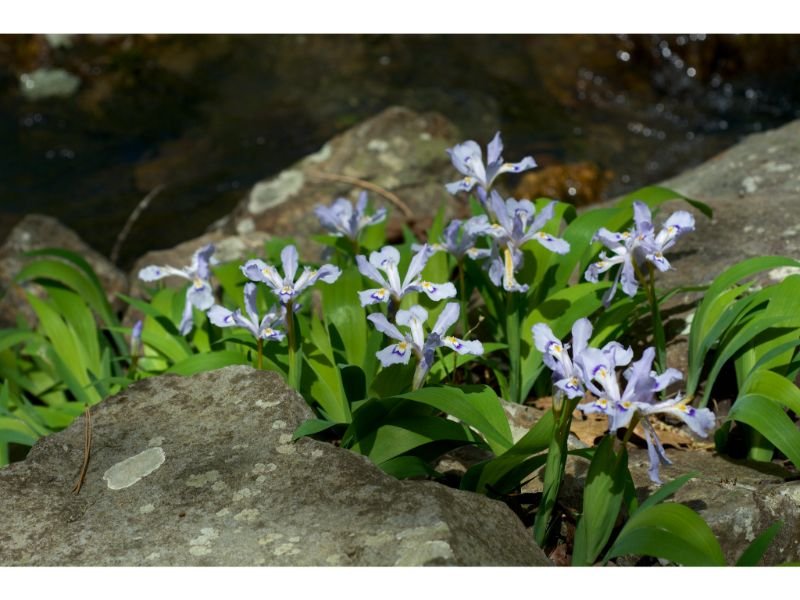
Plant Size: 0.1 to 0.3 meters high and 0.3 to 0.6 meters wide
To beautify your wetland garden, aside from adding shrubs for wet areas zone 3 you can also invite flowering plants like this one. White dwarf crested iris is a specific variety of the regular crested iris, known for its pure white blooms and being easy to maintain. Like many other iris species, this plant can be propagated through its rhizomes.
Plant Trivia
White dwarf crested iris is notable for their ability to thrive in shady or partial shade environments. They can even be grown in areas with dappled sunlight, as long as the plant can still receive filtered light.
Lizard’s Tail (Saururus cernuus)
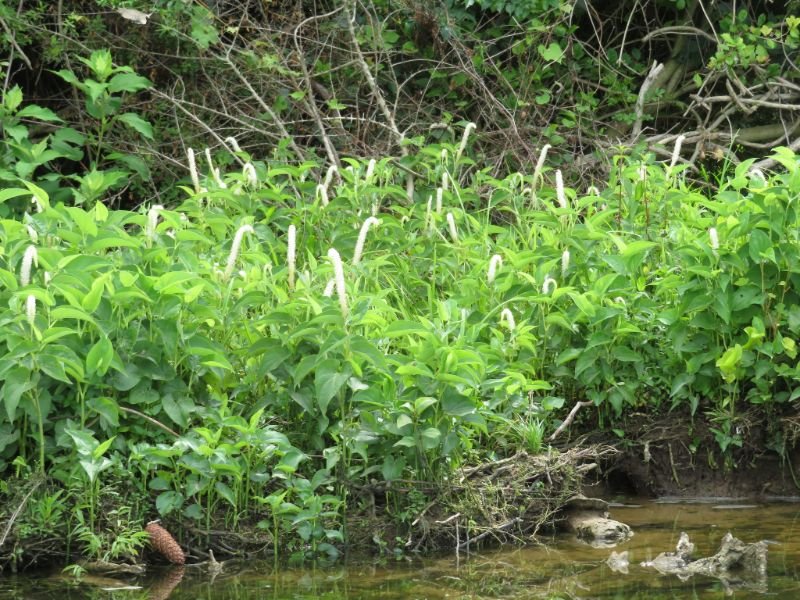
Plant Size: 0.6 to 1.2 meters high and 0.6 to 1 meter wide
Lizard’s tail is a lesser-known flowering plant in the world of gardening that deserves more spotlight. Along with the previous shrubs for wet areas in Zone 3, this semi-aquatic plant could help you create such a fantastic wetland garden–all thanks to its bizarre yet interesting flower shape. This native to North America has white, slender, and curved flowers that resemble the tail of a lizard.
Plant Trivia
Lizard’s tail usually produces a pleasant fragrance, particularly noticeable when the plant blooms. The smell can be described as sweet and fresh–similar to tropical fruit.
Red Flowering Plants for Wet Areas Zone 3
Cardinal Flower (Lobelia cardinalis)
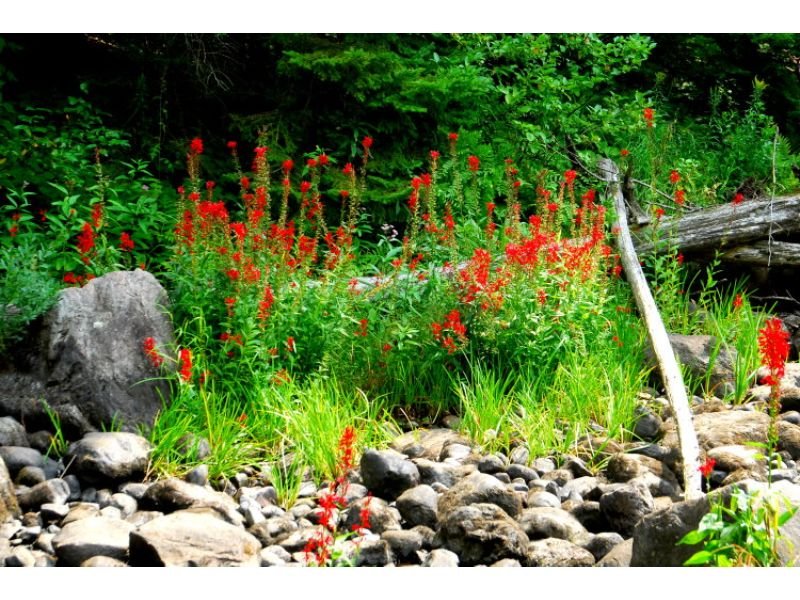
Plant Size: 0.9 to 1.2 meters high and 0.3 to 0.6 meters wide
This botanical diva is best known for their eye-catching flowers. But although being a diva, cardinal flower is not too picky when it comes to maintenance. This plant thrives in moist or wet soil and tolerates partial or full sun conditions. They’re not invasive either, but you need to watch out for the plant’s ability to self-seed, moreover in favorable zones.
Plant Trivia
Cardinal flowers have bright cardinal red or blood-red, tubular-shaped blooms that are highly attractive to pollinators like hummingbirds.
Edible Flowering Plants for Wet Areas Zone 3
Common Blue Violet (Viola sororia)

Plant Size: 0.1 to 0.3 meters high and wide
Along with shrubs for wet areas zone 3 like Canadian serviceberry and black chokeberry, common blue violet can be a flawless addition to the edible wetland garden. Both of the foliage and blooming parts of this plant are edible, and usually used in salad or brewed as tea. Common blue violet has a slightly sweet flavor that is also attractive enough for small pollinators.
Plant Trivia
Common blue violet produces blooms that can be used as natural dyes. The petals yield shades of lavender blue, purple, or even pink when used in dyeing textiles.
Wrapping Up: What To Plant for Wetland Landscapes in Zone 3?
Gardening in the damp area of Zone 3 can be simple, as long as you pick the right plant with the right growing needs. Shrubs for wet areas zone 3 such as white dogwood and Canadian serviceberry, to the flowering plants like cardinal flower and white dwarf crested iris, are just a few botanical treasures that can make it possible for plant enthusiasts to create their dream garden–no matter what their zones and soil conditions are.

New author in the hood. Loves gardening and flowers are my spirit animals (yes I know they are not animals but I insist). I will be covering most of the flowers’ topics here and occasionally random though as well.






